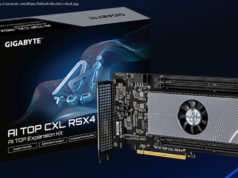The Windows Command Prompt might be old, but it’s still a useful tool for tweaking, diagnosing, and exploring your Windows 10 or 11 PC. Here’s how to use it.
The Command Prompt in Windows 10 and 11 isn’t the mainstay tool it once was, but it’s still incredibly useful. With the right know-how, you can use Command Prompt commands to perform a wide range of tasks in Windows — and many of them aren’t easy to do with a mouse. To help you find the tools you need to use the Command Prompt effectively, we’ve put together a list of the most common and useful Command Prompt commands so you can get it working exactly how you want to.How to access Command Prompt in Windows
There are a lot of different ways to access the Command Prompt, but there are two methods that are the most straightforward:
Use Windows search to look for “Command Prompt,” then select the corresponding result.
Press Windows Key + R to open the Run terminal. Then type “CMD” and press the Enter key.
Some commands won’t run in Command Prompt without the appropriate permissions, so if you run into difficulty, try right-clicking on the CMD icon and selecting Run as Administrator instead.How to use Command Prompt
If you’re used to a visual interface like Windows or macOS, then Command Prompt might look like something out of ancient history — And it is. The Command Prompt was first added to the predecessors of Windows almost 40 years ago, but it is still just as functional today as it ever was.
To use it, you’ll need to type out commands in a specific order with correct spacing and special character usage. If you’ve ever done any programming, it’ll feel a little familiar. You input the command with correct spelling, syntax, and context, and you’ll get the result you want. If you don’t do all that right, it won’t do anything but let you know you did something wrong.
Follow proper instructions on how to use various Command Prompt commands, though, and you should be OK.The most useful commands
You don’t need to know all of the Command Prompt commands to find some use in it. These are our favorites and some of the ones we consider the most useful.
Help — Arguably the most important of all Command Prompt commands, typing “help” will give you a list of available commands. If you don’t learn anything else from this guide, know that “help” is only four short letters away if you ever fall down a CMD rabbit hole.
“command” /? — While it requires you to input a command in the quoted section (without the quote marks), this one will tell you everything you need to know about any of the commands on this list. It’s great to use if you want more detailed information about what the commands do and to see examples of how they work.
TRACERT — Should you want to track your PC’s internet traffic, this command lets you track the number of intermediate servers your packets go through, the time each transfer requires, and the name or IP address of each server.
IPConfig — If you have networking issues, IPConfig will be very useful for all sorts of reasons. Running it tells you a lot about your PC and your local network, including the IP address of your router, the system you’re using at the time, and the state of your various network connections.
Ping — Need to confirm whether your internet is officially down or if a software problem is causing an issue? Ping something. It doesn’t matter whether it’s Google.com or your own personal remote server. Whatever you choose, if you get a response, you know a connection is there. This command is also useful for checking if local network systems are functioning properly.
Chkdsk — Check Disk, written as “Chkdsk,” looks at your chosen drive for errors.






